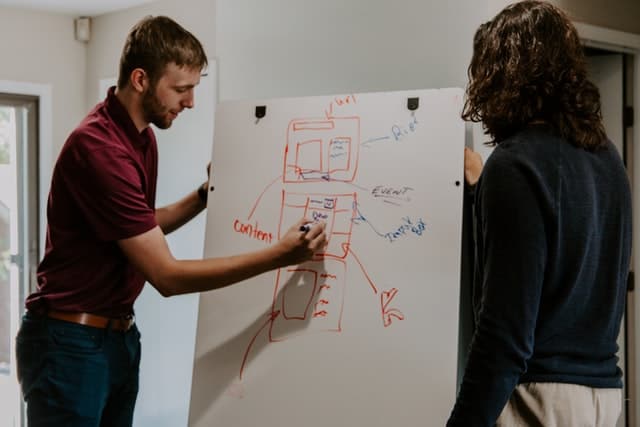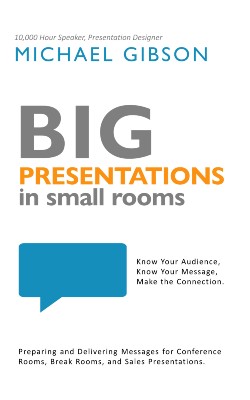Presentation focus can help the audience relax and listen. Or it can cause them to question content before it is presented.
You invested time and energy into the preparation and practice of this presentation.
To ensure that it is well-received, pay attention to the presentation focus.
What does that mean? Perhaps a story of two mechanics can help us understand.
Presentation Focus: The Story of Two Mechanics.
Two mechanics face the same job.
Each one provides a reasonable estimate. Each one fixes the problem within the same amount of time. The outcome, from the customer’s perspective, is the same. It was a respectable job.
Does it matter that one was 20 years more experienced than the other and required no research to address the problem while the other had to do research and approach the problem more slowly because of the lack of experience?
No. What matters is the outcome. Needs were met at a reasonable price within a reasonable amount of time.
What would happen if the rookie mechanic drew attention to his lack of experience and revealed he watched YouTube tutorials to learn how to fix the problem?
That would be drawing attention to the wrong thing. The attention should be on the goal: to meet needs at a reasonable price within a reasonable amount of time.

Presentation Focus: The Story of Two Presenters
Two employees are assigned the same presentation.
Each one provides the same quality of presentation at the scheduled time.
Does it matter that one was more experienced and could do the presentation with less stress and less preparation? Does it matter that the rookie had to invest much more time in research, development, and practice?
No. What matters is that the needs were met at the scheduled time with the same level of quality.
What would happen if the rookie employee drew attention to his lack of experience and that he had to learn the material before he could present it?
That would be drawing attention to the wrong thing. The attention should be on the goal: to meet needs at the scheduled time with a quality presentation.
So… what is the point of the two stories?

Presentation Focus: It’s Not About You
The point is to maintain appropriate focus.
You know the message. You know your audience. And now you seek to make a connection—connecting the audience to your message.
Notice the primary elements: message, audience, connection.
A common mistake occurs at the beginning of many presentations. The focus is put in the wrong place. And then it is difficult to move that attention to the appropriate place.
It is like a spotlight on a stage aimed in the wrong direction. It can be heavy, bulky, and difficult to move.

Presentation Focus: Two Common Misplacements
This misplacement occurs when presenters place too much attention on themselves.
In the two stories, we considered what happens when someone highlights their inexperience. A similar thing happens if attention is drawn to the fact the presenter did not have much time to prepare or that the presenter is terrified of public speaking–or anything else that draws attention to the presenter instead of drawing attention to the message.
The opposite can be true. Presenters might highlight their credentials and experience in ways that distract from the message. If it seems that the presenter is bragging or trying too hard to be impressive, that pulls attention away from the content of the message and makes it more difficult to connect the audience to the content.
Presentation Focus: Appropriate Options
Is there a way to establish credibility and or acknowledge limitations without drawing focus away from the content?
Yes.
Please hear this guidance with appropriate motivations. It is not to be used as a clever way to make excuses or a way to brag on yourself subtly. It is a way to provide appropriate context.
When seeking to establish credibility, weave that content into your presentation without making a big deal out of it. You might say something like, “One thing I learned in my 25 years of experience in project management is…”
Or. This concept was a big part of my doctoral thesis about …
When wanting an audience to know that you were not provided much prep time, be careful.
You might be throwing blame on someone who needs to be on your side (like your boss).
If you still want to do it, you could say something like, “When asked to do this presentation on ______ (say the date and general time: morning or afternoon), I immediately began compiling information about…
If assigned a new topic, think about the context of the meeting and what would be most helpful for the audience. If everyone in the room knows that this was new to you, don’t dwell on it during the presentation. They know it, and you are wasting time while being redundant.
If the audience doesn’t know that this was new to you, you still need to focus on the context of the meeting and the audience’s needs. It could be that you will function like the rookie mechanic—learning and using the knowledge to meet needs. If you can do that, it doesn’t matter that the information was new to you.

The bottom line is that information about you should be limited. Share information that helps connect the audience to the content—that helps lead them toward the goal.
Know your message. Know your audience. Make the connection.
You got this.
We can help!
Want to know more? Keep reading The Blog.
Do you prefer to listen? Check out The Big Presentations Podcast!
Want to know even more? Order the book Big Presentations in Small Rooms!




